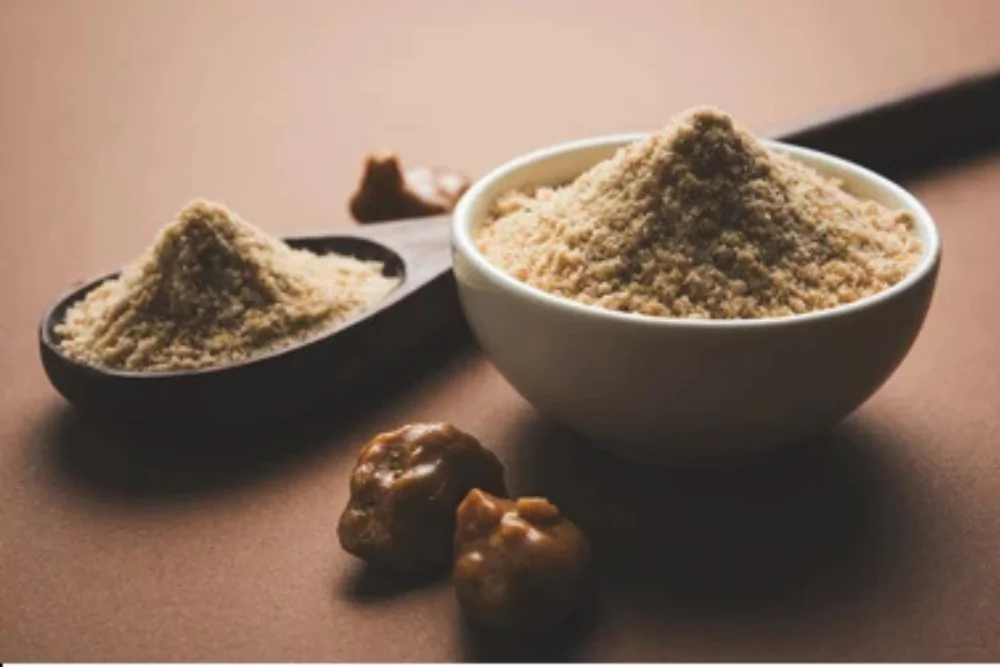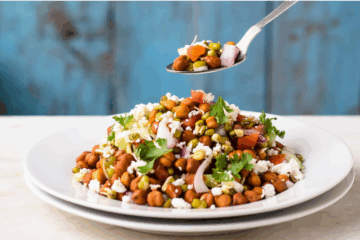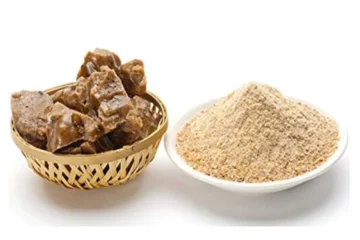Why is hing (asafoetida) used in Jain cooking during summer?
Short Answer: Hing is essential in Jain cooking during summer because it boosts digestion, is satvik (pure), and substitutes onion-garlic while helping prevent bloating in hot weather.
Detailed Answer:
- Balances heat in the body: Summer leads to internal heat build-up. Hing, with its mild pungency, cools and stabilises the digestive system without being heavy.
- Satvik and onion-free: Jainism promotes a satvik lifestyle, avoiding onion, garlic, and other root vegetables. Hing is a permissible ingredient that adds depth without violating religious values.
- Reduces toxins and bloating: It acts as an anti-flatulent, helping reduce ama (toxins) caused by improper digestion, which is more common in summer.
- Activates digestion: Hot weather reduces appetite and slows digestion. Hing triggers digestive enzymes that help process food better, preventing fatigue and heaviness.
What are some light Jain recipes for summer that don’t use onion or garlic?
Short Answer: Light summer Jain dishes include Hing Jeera Kadhi, Lauki Chana Dal, Cucumber Raita, Methi Thepla, and Raw Mango Hing Pani — all cooling, satvik, and flavorful without onion or garlic.
Detailed Answer:
- Hing Jeera Kadhi: A comforting Gujarati kadhi using yogurt, besan, hing, cumin, and curry leaves. It’s light, cooling, and aids digestion.
- Lauki Chana Dal: Bottle gourd is hydrating and rich in fiber. Combined with protein-rich chana dal and tempered with hing, this becomes a wholesome dish ideal for lunch.
- Cucumber Raita: Fresh cucumber mixed with chilled curd, roasted cumin powder, mint, and a hint of hing makes a cooling side dish to balance meals.
- Methi Thepla: Methi (fenugreek) aids digestion and when combined with hing, ajwain, turmeric, and whole wheat, makes a flavourful flatbread perfect with curd.
- Raw Mango Hing Pani: This refreshing drink combines raw mango pulp, roasted cumin, black salt, hing, and mint leaves — perfect for rehydrating and aiding digestion during heatwaves.
Can hing help with digestion or bloating in hot weather?
Short Answer: Yes, hing improves digestion and reduces bloating by stimulating enzymes and relieving gastrointestinal discomfort, especially useful in hot and humid weather conditions.
Detailed Answer:
- Gas reduction: Hing prevents gas buildup in the intestines by relaxing the abdominal muscles and enhancing motility.
- Reduces fermentation: Foods ferment quickly in summer. Hing prevents microbial fermentation, reducing bloating and cramps.
- Enhances digestive juices: It promotes bile flow and gastric enzymes, helping break down carbohydrates and proteins effectively.
- Suitable for all ages: Hing water is often recommended for infants and elders in summer due to its gentle digestive effects.
Digestive Benefits of Hing – Quick View
| Benefit | Description |
|---|---|
| Reduces bloating | Eliminates gas by relaxing intestinal muscles |
| Stimulates digestion | Activates bile and gastric acid for better metabolism |
| Combats constipation | Improves bowel regularity during summer sluggishness |
| Relieves acidity | Neutralises excess stomach acid due to heat |
Are these Jain-friendly recipes also suitable for fasting or vrat days?
Short Answer: Yes, these recipes are vrat-safe as they are made with sattvic ingredients, light grains, and cooling spices like hing, making them ideal for Jain fasting practices.
Detailed Answer:
- No onion/garlic or root vegetables: All dishes avoid ingredients prohibited during Jain fasts like tubers and pungent bulbs.
- Light grains or no grains: You can swap rice with sama or use recipes like cucumber raita and mango hing pani that contain no grains.
- Supports hydration: Summer vrat recipes focus on water-rich vegetables and curd to maintain electrolyte balance.
- Balances energy: Dishes like kadhi and lauki dal provide light protein and probiotics that help avoid fatigue during fasting.
- Easy to digest: Hing improves digestion, making these recipes comfortable even on an empty stomach or during partial fasting.
How can I make these Jain dishes taste flavorful without onion or garlic?
Short Answer: Boost flavour in Jain dishes by using hing, cumin, ajwain, curry leaves, ginger, roasted masalas, and tangy agents like lemon or amchur instead of onion or garlic.
Detailed Answer:
- Hing (asafoetida): Just a pinch of Hingwala’s pure hing gives dishes a complex aroma and deep flavor. It’s a perfect onion-garlic substitute.
- Tempering techniques: Use mustard seeds, cumin, hing, and curry leaves in hot ghee to enhance the base aroma of any dish.
- Dry spices: Include roasted jeera powder, coriander powder, or black pepper to bring layers of taste.
- Sour agents: Add amchur (dry mango powder), lemon juice, or tamarind to lift flavors without needing pungency.
- Fresh herbs: Coriander, mint, and fenugreek bring freshness and contrast, balancing the absence of onion and garlic.
- Ajwain and ginger: They bring warmth and zing while aiding digestion, perfect for summer satvik meals.
Conclusion
Jain summer cooking doesn’t have to be bland or repetitive. By using the right blend of spices — especially Hingwala’s high-quality hing — you can create meals that are flavorful, healthful, and align with Jain dietary beliefs.
These five Jain-friendly hing recipes are perfect for hot weather. They cool the body, support digestion, and work wonderfully for vrat and satvik diets. Whether it’s a hydrating mango drink, a comforting kadhi, or a spicy methi thepla — hing makes every bite satisfying without the need for onion or garlic.
Explore Hingwala’s pure and aromatic hing range today to bring wellness and flavor into your summer meals.





